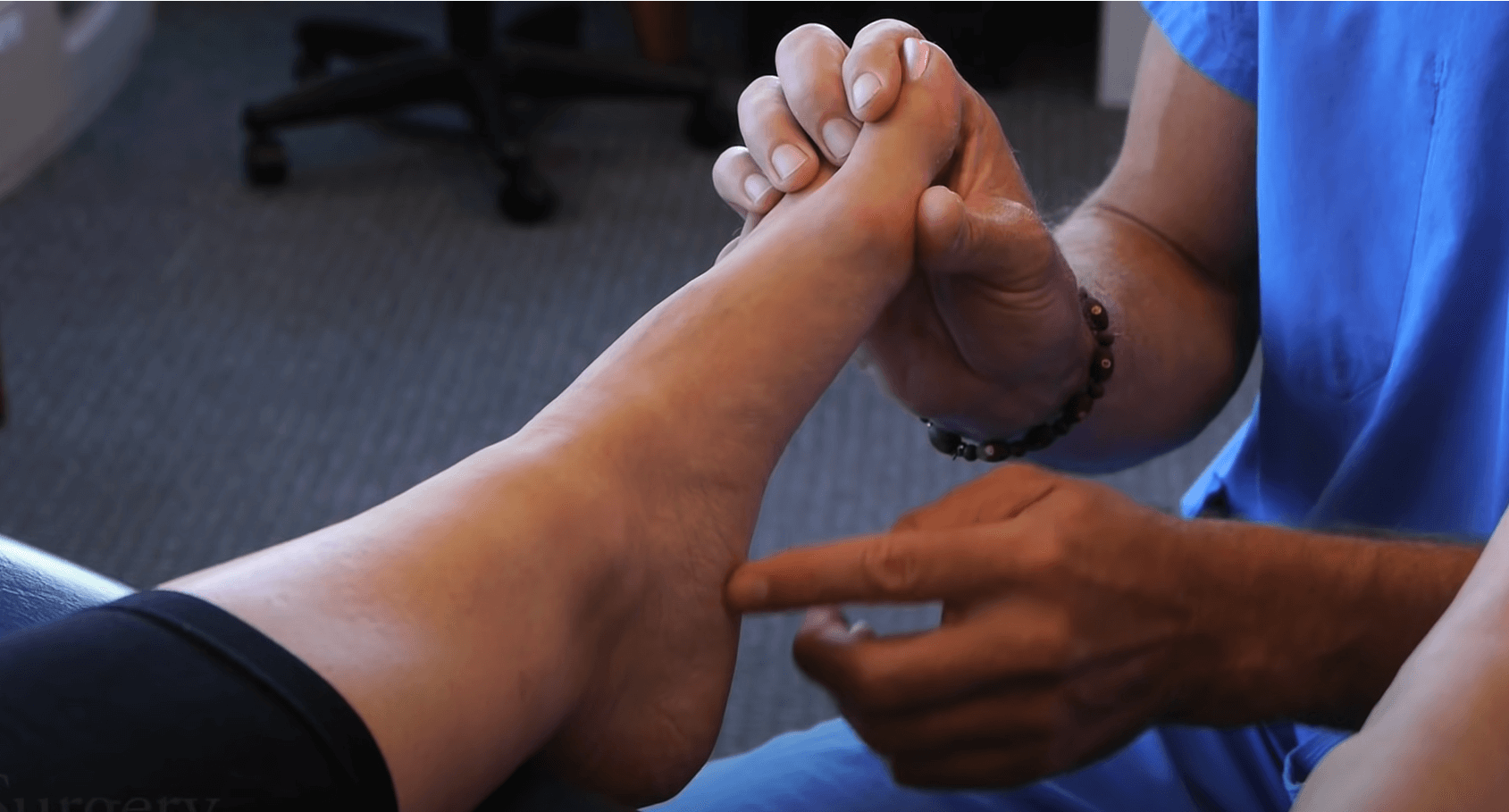Summer is here!
Time to fully embrace open-toed footwear. While this change is relieving and exciting for some, if you’ve battled thick or discolored nails, this can be an unwelcome adjustment.
However, this potentially embarrassing season can become more pleasant with proper foot care and easy, inexpensive home remedies. To do this, we will explore the reasons behind nail disorders and share some easy and inexpensive home remedies.
Understand Nail Health
Before we jump into the specifics of poor toenail health, it’s important to clearly understand the nail itself.
The toe and fingernails are composed of densely packed keratin cells. They grow approximately 1mm per month, from the root, with the nail bed extending along the top of the last digit. The skin’s boundary and the nail’s free end are known as the hyponychium, which provides a protective barrier along the nail edge.
Nail composition includes roughly 7-12% water, and the surface is remarkably permeable. Various factors can impact nail health, including diet, systemic health, trauma, fungus, yeast, or mold. Aesthetic signs of a nail problem include nail thickening or discoloration (frequently white, yellow, and black toenails).
Because of the vast variety of factors that impact nail health and appearance, it can be difficult to determine the root cause. In light of this, we’ll explore two of the most common causes.
Dystrophic Nails:
Nails that are exposed to trauma in the form of sudden impact, repetitive friction, rubbing, or pressure will be subject to structural changes. For example, when tissue is exposed to repetitive motions that rub or squeeze, cells often thicken to protect themselves.
Calluses then begin to form as a response to the frequent pressure and friction. When toenails are squeezed within a narrow toe box and repeatedly rub against each other and the fabric of the shoe, this triggers the nail bed to form tougher, thicker layers of cells. This can cause a toenail to look yellow, slightly darkened, and thick.
Mycotic Nails:
Toenail fungus, or onychomycosis, can cause the nails to thicken and discolor if infected with a fungus.
Fungi live within our environment and sometimes even on our skin. The presence of fungi is not always harmful and may go unnoticed due to a lack of irritation or apparent symptoms. Fungi can become a concern under the right circumstances, specifically in a dark, moist, and warm environment.
Combined with a little rubbing, friction, and squeezing, warm and moist skin will begin to break down on a microscopic level. Small cracks will form in predictable friction areas: between the toes, along cracked heels, at the end of the nail, and on the nail bed (hyponychium).
At these areas where the skin breaks down, fungi can seek protection and ‘burrow’ into small crevices. The deeper fungus travels into skin folds or under nail beds; the more difficult it is to treat, especially for those with psoriasis.
The most common fungus that impacts nail health, Tinea Pedis, is commonly known as Athlete’s Foot. Tinea Pedis can be found on most surfaces and loves environments that are warm, moist, and dark (like our footwear). Tinea Pedis is also slightly misunderstood or misrepresented by drug companies.
Touching it does NOT mean you will get an athlete’s foot. While many factors can lead to the proliferation of Tinea Pedis, it shouldn’t be treated like a contagious disease. Genetic factors like your skin’s biochemistry may make your skin more suitable or desirable to certain fungi, like sweaty feet.
There are also environmental factors to consider, like a worker or athlete that is unable to take off footwear for a 12-hour shift or a long practice. Fungi also prefer certain materials and fabrics you may be wearing unknowingly. Given these genetic and environmental factors, just because you are exposed to or in contact with fungus doesn’t mean you will end up with a toenail fungal infection.
However, if Tinea Pedis does tend to favor your skin biome, here are some DIY tricks to manage skin and nail health issues.

1. Let your feet breathe.
Remove shoes while seated at your desk or when you come home from work. Exposing feet to air frequently prevents moisture build-up and keeps feet dry. If you observe any symptoms of nail fungus or ingrown nails, it is recommended that you seek the assistance of a podiatrist for fungus treatment.
2. Expose feet and nails to the sun.
UVB is a natural germicidal agent, so with sunny days on the horizon, go ahead and let those toes see the light of day.
3. Remove nail polish and other barriers to the nail bed.
Nails need to breathe to be healthy. Polish not only obscures airflow to the nail, but it also prevents other anti-fungal methods like sunlight or topical medications from working when it’s time to remove the polish, use a non-acetone polish remover to minimize the risk of drying out or damaging your nails. If you must paint your nails, try Just for Toenails Polish. It’s a safer and more natural alternative.
4. Avoid cotton socks.
Cotton traps moisture and harbors fungus easily. Instead, wear socks composed of natural wicking materials like merino wool or bamboo and those with moisture-wicking technology (example: CoolMax®).
5. Wear shoes that are naturally shaped.
When you have to wear shoes, using shoes that allow toes to spread and avoid toe compression will help prevent friction or rubbing against the edge of the nail. Also, wearing shoes that pinch the toes could potentially contribute to developing ingrown toenails.
6. Decrease nail bulk.
Debriding nails is the process of trimming and thinning nails. While nail debridement is common in podiatric offices, you can use clippers, a nail file, and an Emory Board to clip thin nails at home. Thinning nails help remove infected nail bulk while exposing the nail’s healthy part, allowing topical medications or sunlight to work faster.
7. Apply topical antifungal creams.
After thinning and trimming the nail, you can apply an over-the-counter topical antifungal cream to clean dry skin five nights a week. Once the medication is applied to the nail bed, cover each nail with plastic wrap. This ensures that cream remains on the toe and prevents the cream from soaking into socks or bed sheets. Also, if you have dry feet, consider using antifungal lotion to moisturize the affected area and promote healing.
Note: Do not use cloth bandages or Band-Aids; cotton will soak up medications. Topical antifungals should be used consistently for active nail infections until the entire nail is healthy. Prophylactic medication use may also be recommended bi-monthly (ongoing) to prevent future fungal growth. For topical treatments to be helpful, the nail must be debrided first.
Depending on the cause of your nail discoloration or thickening, the above steps may only be a small portion of your recovery. It’s important to realize that regardless of the causes, a healthy nail’s regeneration and growth will take time. Nail growth is slow, averaging 1mm per month in length.
Full re-growth of a big toenail may take upwards of one year. You may not see full resolution for months as you change sock fiber type and footwear shape and introduce nail debridement or topical medications. A complete cure can sometimes be a lifelong commitment to protecting nails from excessive rubbing and friction or establishing a routine that keeps feet free of moisture and factors that encourage fungal growth, all of which contribute to having healthy feet.
For a detailed explanation and understanding of your specific nail health concerns, it may be necessary to check with your physician. For common and basic nail needs, we hope the above steps are a positive part of your recovery and overall health. For other foot and nail care tips and tricks, please visit https://correcttoes.com/foot-help/foot-conditions-and-problems/fungal-toenail-infection/.






